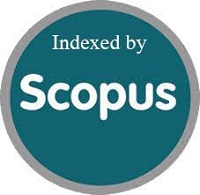Perbandingan Sosial Desirabilitas Bentuk Soal Skala Likert, Semantik Diferensial, dan Forced-Choice dalam Pengukuran Prosocial Tendencies
DOI:
https://doi.org/10.15408/jp3i.v1i4.10727Keywords:
Validitas konstruk, social desirability, prosocial tendencies measures, Likert scale, semantic differential scale, forced-choice formatAbstract
Self report Prosocial Tendencies Measure (PTM) dibuat kedalam tiga format yang berbeda (Likert scale, Semantic Differential, dan Forced-Choice). Ketiga format PTM tersebut dianalisis untuk dilihat tingkat validitasnya dan kerentanannya terhadap social desirability response (SDR). Masing-masing format self-report terdiri dari 30 item pernyataan. Marlowe-Crowne Social Desirability Scale (MCSDS) digunakan untuk melihat kerentanan masing-masing format PTM terhadap SDR. Data yang digunakan dalam penelitian ini diperoleh dari hasil pengukuran terhadap 311 orang mahasiswa (219 perempuan dan 92 laki-laki). Hasil menunjukan bahwa bentuk Semantic Differential memiliki tingkat validitas yang tinggi akan tetapi sangat rentan terhadap SDR. Bentuk Likert scale juga memiliki tingkat validitas yang tinggi setelah bentuk Semantic Differential akan tetapi masih rentan terhadap SDR. Sedangkan bentuk Forced-Choice sangat kurang rentan terhadap SDR. Analisis tambahan menunjukkan bahwa bentuk Likert scale –lah yang paling baik dalam mengukur PTM. Bentuk Semantic Differential dan Likert scale dilaporkan selain mengukur PTM juga mengandung bias social desirability. Meskipun bentuk Forced-Choice juga dilaporkan mengukur PTM akan tetapi mengandung bias social undesirability.
References
Anastasi, Anne., & Urbina, Susana. (1997).Psychological testing. 7th edition. Pearson Prentice Hall.
Barrick, R. Murray., & Mount, K. Michael. (1996). Effects of impresssion management and a self-deception on the predictive validity of personality con-struct. Journal of Apllied Psychology, 81, 261,272.
Carlo, Gustavo., & Randall, A. Brandy. (2002). The develop-ment of a measure of prosocial beahviors for late adolescents. Journal of Youth and Adole-scene, 33, 31-34.
Christiansen, Niel. D., Burns, Garry. N., & Montgomery, George. E. (2005). Reconsidering forced-choice item formats for appli cant personality assess-ment. Human Performance, 18 (3), 267-307.
Edwards, AL., Walsh, JA., & Diers, CJ. (1970). The relationship between social desirability and internal consistency of persona lity scales. Jurnal of Applied, 47(4), 255-259.
Ellingson, E. Jill., Smith, D. Brent., & Sackett, R. Paul. (2001) Inverstigating the influence of social desirability on persona lity factor structure. Journal of Applied Psychology, 86, 122-133.
Jackson, Douglas., Wroblewski, R. Victor., & Ashton, C. Michael. (2000). The impact of faking on employment tests: does forced-choice offer a solution?. Human Performance, 13, 371-388.
Joinson, Adam. (1999). Social desir-ability, anonymity, and Internet-based questionnaires. Behavior Reseacrh Methods, Instrument,& Computers, 31, 433-438. Joreskog, K. G., & Sorbom, D.(2004). LISREL 8.70 for Windows (computer software). Lincoln Wood, IL: Scientific Software International, Inc.
Messick, Samuel. (1960). Dimensi ons of social desirability. Journal of Consulting Psycho logy, 24 (4), 279-287.
Mills, F. Jeremy & Kroner, G. Daryl.(2005). An investigation into the relationship between social ly desirable responding and offender self-report. Psychologi cal Services, 2, 70-80.
Paulhus, DL. (1981). Control of social desirability in personality
inventories: principal-factor de-letion. Journal of Reseacrh in
Personality, 15, 383-388.
Paulhus, DL. Measurement and control of response bias .(1991).
In J. P. Robinson, P.R. Shaver & L.S. Wrightsman (Eds). Measures of personality and social psychological attitudes (pp. 17-59). San Diego, CA: Academic Press, Inc.
Rothstein, g. Mitchell & Goffin, D. Richard. (2006). The use of personality measures in person-nel selection: What does current research support?. Human Resource Management Review, 16, 155-180.
Zickar, MJ & Drasgow, F. (1996). Detecting faking on a per-sonality instrument using appro-priateness measurement. Appli-ed Psychological Measurement, 20, 71-87.



